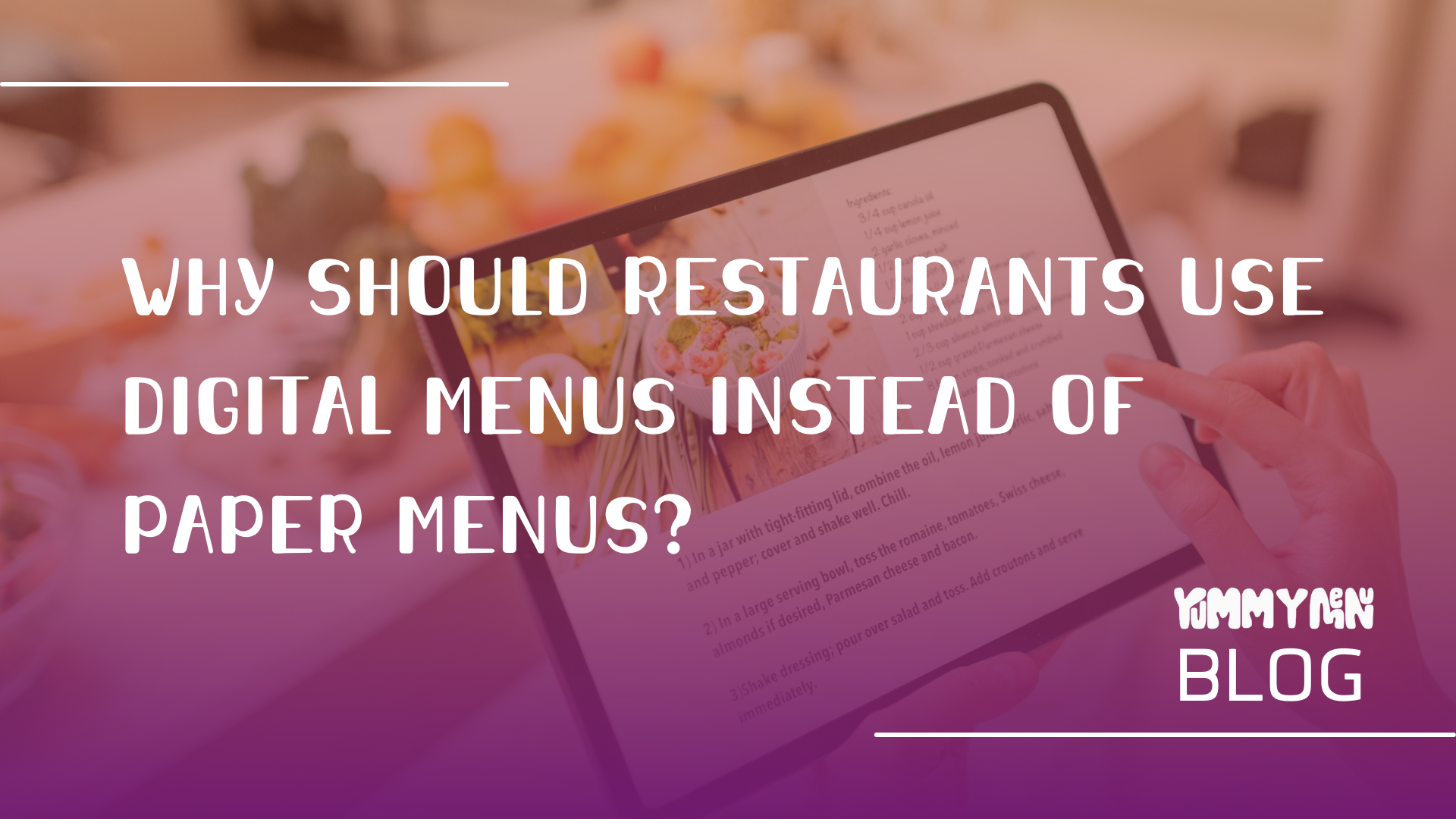
Why Should Restaurants Use Digital Menus Instead of Paper Menus?
Restaurants can benefit from using digital menus instead of traditional paper menus for several reasons:
Enhanced Flexibility: Digital menus allow restaurants to make changes to their menu items, prices, and specials in real-time. With a few simple updates on a digital platform, restaurants can instantly reflect changes across all their digital menus, eliminating the need to print new paper menus every time a modification is made. This flexibility enables restaurants to respond quickly to inventory changes, seasonal ingredients, or customer preferences.
Cost and Environmental Savings: Using digital menus eliminates the ongoing costs associated with printing and reprinting paper menus. By going digital, restaurants can save money on paper, ink, and printing services. Moreover, it contributes to environmental sustainability by reducing paper waste and the energy consumed in printing. It aligns with the growing trend of businesses adopting eco-friendly practices and reducing their carbon footprint.
Interactive and Engaging Experience: Digital menus offer an interactive and engaging experience for customers. They can include vibrant images, videos, and descriptions that enhance the visual appeal of menu items. Customers can zoom in, scroll through options, and even access additional information like ingredient details or allergen warnings. This interactivity helps customers make more informed decisions and enhances their overall dining experience.
Upselling and Cross-Selling Opportunities: Digital menus provide restaurants with the opportunity to upsell and cross-sell menu items. By strategically placing appealing visuals, highlighting chef recommendations, or offering add-ons and combinations, digital menus can influence customer choices and increase sales. Additionally, digital menus can incorporate customer reviews and ratings, helping customers make decisions and boosting confidence in their choices.
Integration with Ordering Systems: Digital menus can be seamlessly integrated with online ordering systems, allowing customers to place orders directly from their devices. This integration streamlines the ordering process, reduces wait times, and improves operational efficiency. It also facilitates contactless ordering and payment options, which have become increasingly important in the wake of the COVID-19 pandemic.
Data Analytics and Customer Insights: Digital menus can provide valuable data analytics and customer insights. Restaurants can gather data on customer preferences, popular menu items, peak ordering times, and more. This information can help restaurants optimize their menu offerings, improve inventory management, personalize promotions, and tailor their offerings to meet customer demands effectively.
Branding and Customization: Digital menus offer restaurants the opportunity to showcase their brand identity and customize the menu design to align with their visual aesthetics. They can incorporate brand colors, logos, and design elements to create a cohesive brand experience. This consistency in branding helps in creating a memorable impression on customers and fosters brand loyalty.
While digital menus offer numerous advantages, it's important for restaurants to ensure a seamless user experience by providing user-friendly interfaces, reliable technology infrastructure, and proper staff training. Additionally, offering a combination of digital menus and physical menus can cater to customers with varying preferences.
